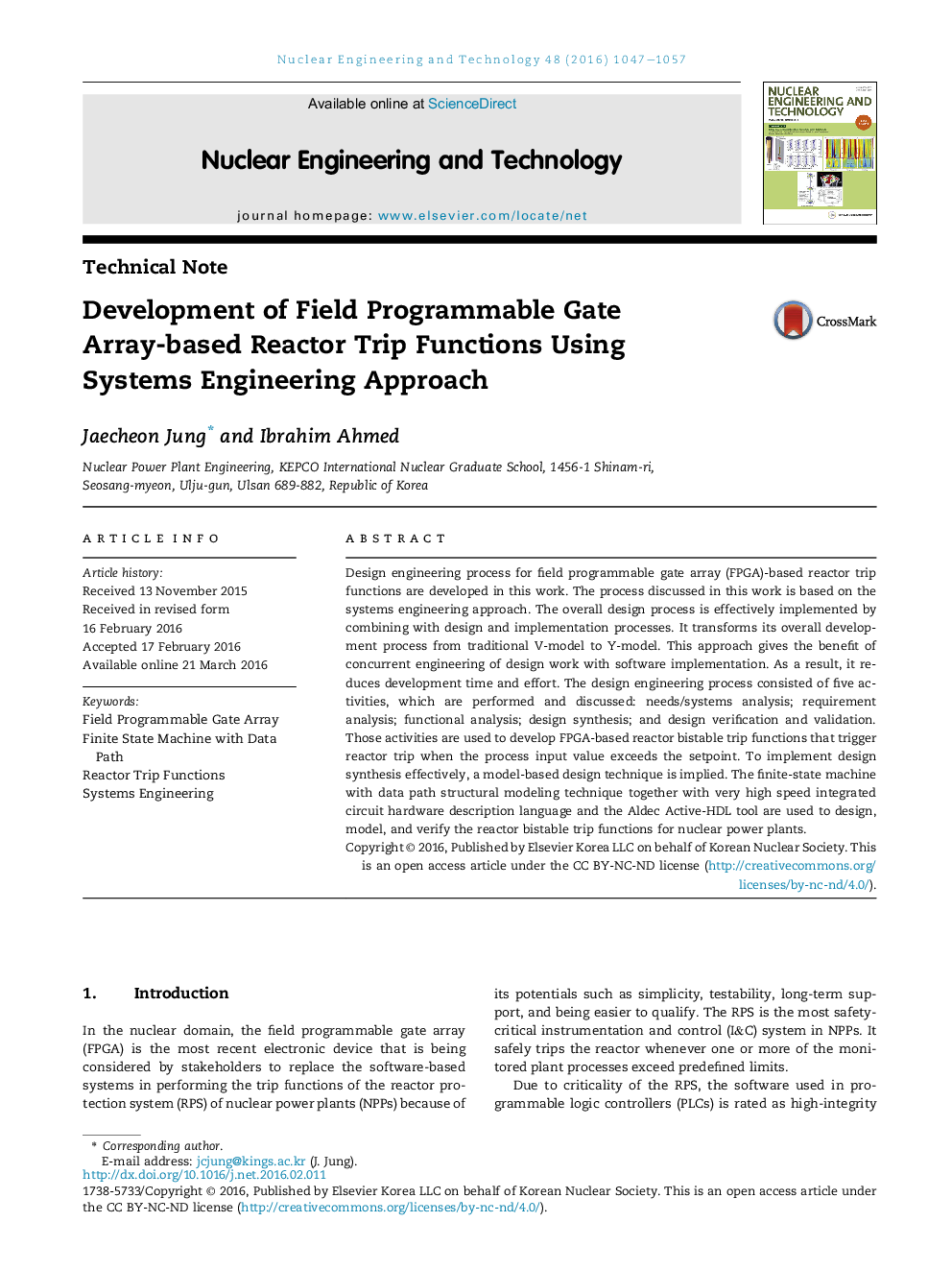| Article ID | Journal | Published Year | Pages | File Type |
|---|---|---|---|---|
| 1739846 | Nuclear Engineering and Technology | 2016 | 11 Pages |
Design engineering process for field programmable gate array (FPGA)-based reactor trip functions are developed in this work. The process discussed in this work is based on the systems engineering approach. The overall design process is effectively implemented by combining with design and implementation processes. It transforms its overall development process from traditional V-model to Y-model. This approach gives the benefit of concurrent engineering of design work with software implementation. As a result, it reduces development time and effort. The design engineering process consisted of five activities, which are performed and discussed: needs/systems analysis; requirement analysis; functional analysis; design synthesis; and design verification and validation. Those activities are used to develop FPGA-based reactor bistable trip functions that trigger reactor trip when the process input value exceeds the setpoint. To implement design synthesis effectively, a model-based design technique is implied. The finite-state machine with data path structural modeling technique together with very high speed integrated circuit hardware description language and the Aldec Active-HDL tool are used to design, model, and verify the reactor bistable trip functions for nuclear power plants.
